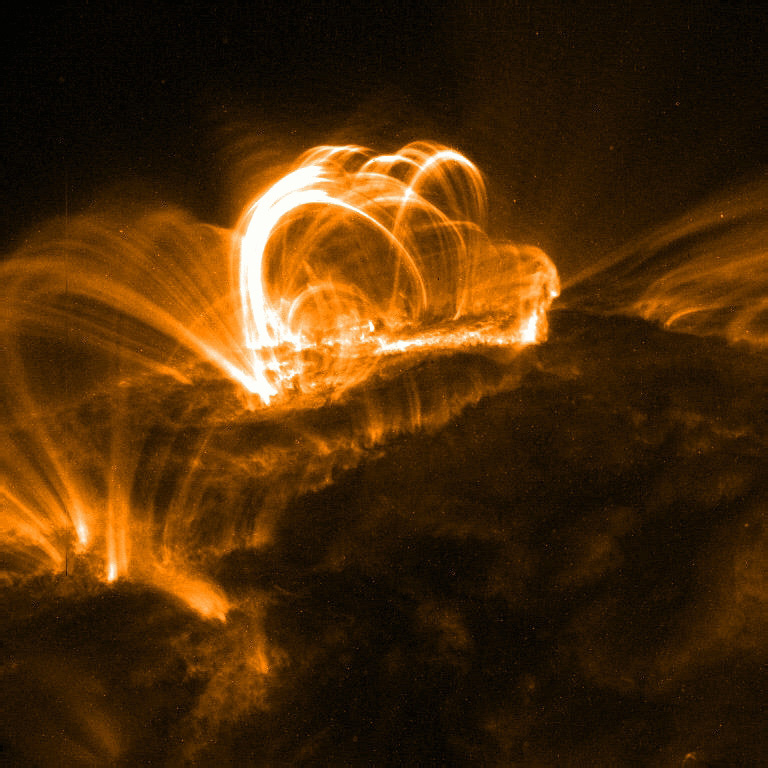Sometimes the sun spits out high-energy particles which slam into the Earth, potentially disrupting our sensitive electronics. New research has found that these particles originate in the plasma of the sun itself, and are trapped there by strong magnetic fields. When those fields weaken, the particles blast out.
The sun constantly emits all sorts of nastiness, like ultraviolet radiation and a stream of solar wind particles. Sometimes it has violent episodes, releasing massive solar flares and coronal mass ejections. And sometimes it just launches a flurry of high-energy particles, made of mostly protons and electrons but also some heavier ions.
These particles are known as SEPs, for solar energetic particles.
Understanding the origins and dynamics of SEPs is critical, as they can affect space missions, orbiting satellites, and even our electrical systems on the surface of the Earth. But we haven’t been able to pinpoint where on the sun they come from, until now.
Combining data taken from NASA’s Wind satellite (located between the Earth and the Sun), JAXA’s Hinode satellite, and a new technique to measure the magnetic field strength of specific regions of the sun, a team of researchers led by David Brooks at George Mason University was able to piece together the SEP origin story.
Co-author Dr Stephanie Yardley at UCL Mullard Space Science Laboratory said, “In our study we have observed for the first time exactly where solar energetic particles come from on the Sun. Our evidence supports theories that these highly charged particles originate from plasma that has been held down low in the Sun’s atmosphere by strong magnetic fields. These energetic particles, once released, are then accelerated by eruptions that travel at a speed of a few thousand kilometers a second.
The team found that the high-energy particles streaming through space had the same abundance of silicon compared to sulphur as plasma on the surface of the Sun – especially in regions that were pinned down tightly by loops of strong magnetic fields. Once those magnetic fields break, they release the onslaught of SEPs (and sometimes more, such as a flare or full coronal mass ejection).
“Our observations provide a tantalizing glimpse into where the material that produces solar energetic particles comes from in a few events from the last solar cycle,” said Brooks, “We are now starting a new solar cycle, and once it gets going we will use the same techniques to see if our results are generally true, or if these events are somehow unusual.
“We are lucky in that our understanding of the mechanisms behind solar storms and solar energetic particles is likely to advance quickly over coming years thanks to data that will be gained from two spacecraft – ESA’s Solar Orbiter and the NASA Parker Solar Probe – that are heading closer to the Sun than any spacecraft has been before.”

